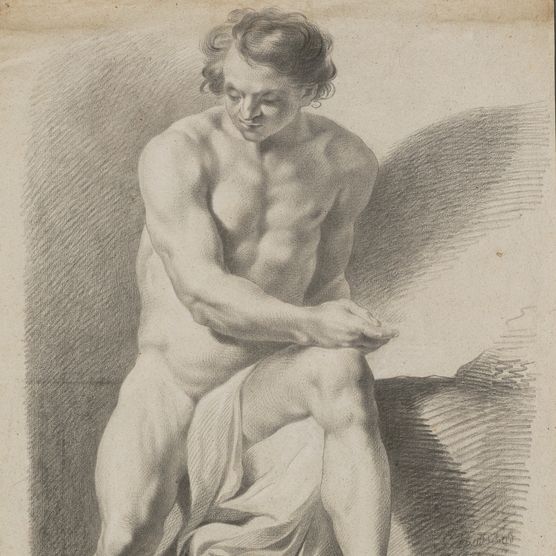We have had to cancel tonight's class. Drawing Class will resume next Thursday, July 23.
The Art Museum is partnering with the Arts Council of Princeton to provide free online art-making experiences. Weekly classes are taught by artist-instructor Barbara DiLorenzo over Zoom, so participants can join live from their home computers; techniques emphasize drawing with pen or pencil on paper. Each week’s lesson features works from the Museum’s collections.
In this session, we will start by learning about the placement of the average adult human’s bones and muscles. We will learn tips and tricks to make sure our drawings of people are comfortably accurate (similar to the approach with perspective), with room for variation based on personal artistic style as well as the cultural and individual characteristics of the subjects.
This event will include live closed captions in both English and Spanish. English captions are available directly in the Zoom toolbar, by clicking the "CC" icon. To access Spanish language captioning, enter the Zoom webinar, then open a separate web browser to visit https://www.streamtext.net/player?event=CFI-PrincetonUArtMuseum where you can select “Spanish” to see the live captioning.
Para acceder a los subtítulos en varios idiomas, ingrese al seminario web de Zoom durante un evento en vivo, luego abra un navegador web separado para visitar esta página donde puede seleccionar" español "o el idioma de su elección.
Materials List for Drawing Classes
These materials are suggested by the instructor but not required. Any pencil, eraser, and paper will work well.
Paper: For the demonstrations, I use Discount School Supply White Sulphite Paper (12 x 18", 50 lb.). My personal sketchbooks include Moleskine, Strathmore, and a variety of others that have different textures and thicknesses. Everyone has their own preference, so I recommend trying out different papers to see what you like!
Factis Mechanical Eraser: This eraser is helpful for pulling graphite and bringing highlights back into your drawing. It can also be used similar to a pencil, making long strokes of white (erasing the graphite) that add texture to a drawing.
Tombow MONO Zero Erasers: Round & Rectangular: I use the small, round eraser for the tiniest erasing details. It saves time to have such a small eraser on hand, and creates beautiful moments of light.
Faber-Castell Drawing Pencils: Although you can purchase a set of pencils in varying grades, for the drawing demo I'll be using 6B so that people can see the dark marks better. I am not a fan of anything in the H grade, as the graphite is too hard and light for me to sketch comfortably. I love a 4B or 6B pencil, but that is entirely personal preference.
General's Pure Woodless Graphite: These pure graphite pencils are a lot of fun to draw with. I usually add them to a pencil lengthener so that I can hold them like a paintbrush. Big, loose marks can be even more fun to draw with—so if you have the ability, give this a try!
Koh-I-Noor Pencil Lengthener (I add the woodless graphite to this): This pencil lengthener was first introduced to me in art school. My drawing teacher would use compressed charcoal in the extender, and hold it like a paintbrush. It allows an artist to draw with a loose hand, moving the entire arm to create curves and gestures. Without it, sometimes a small nub can be harder to hold onto or can limit the range of motion.
LATE THURSDAYS! This event is part of the Museum’s Late Thursdays programming, made possible in part by Heather and Paul G. Haaga Jr., Class of 1970.
Spanish-language live closed-captioning for this program is made possible by the Rapid Response Magic Project of the Princeton University Humanities Council.
